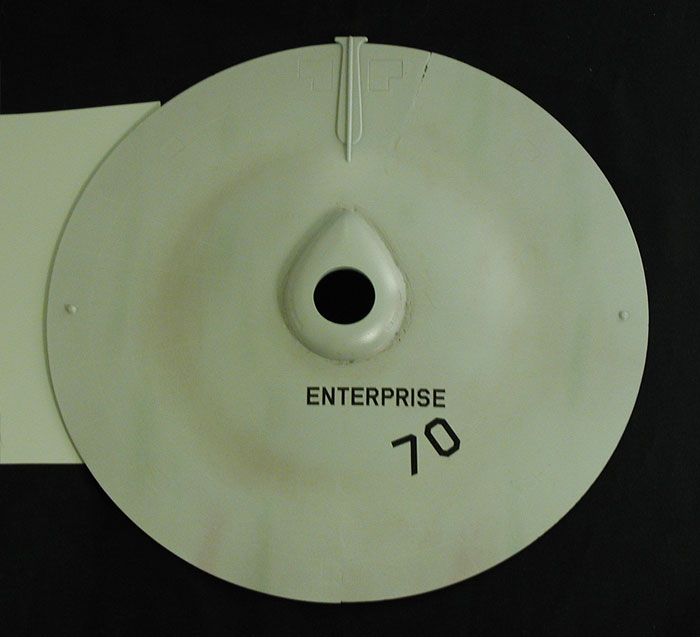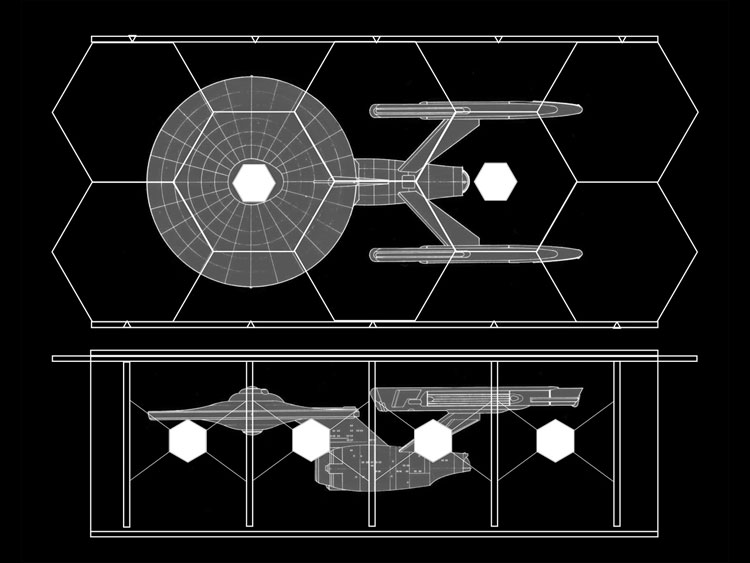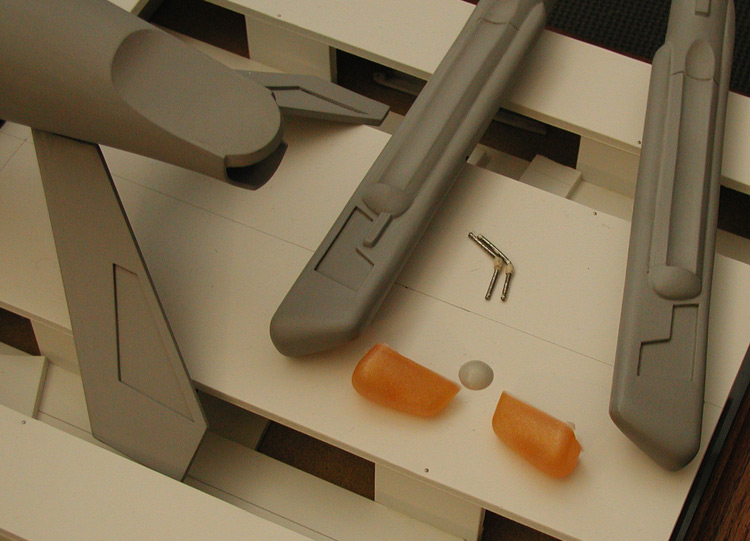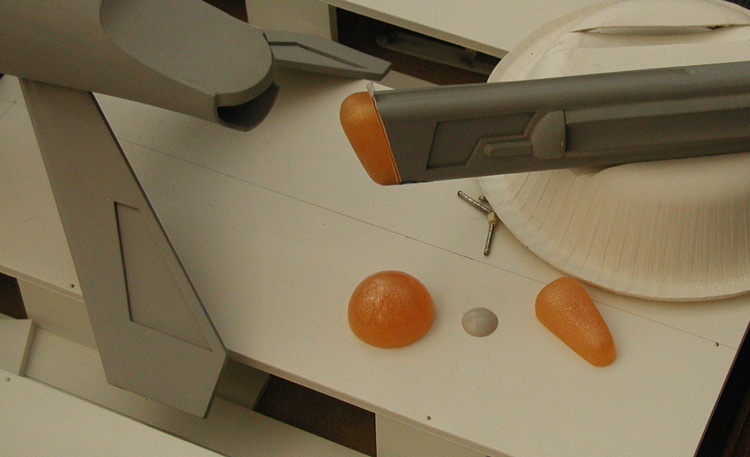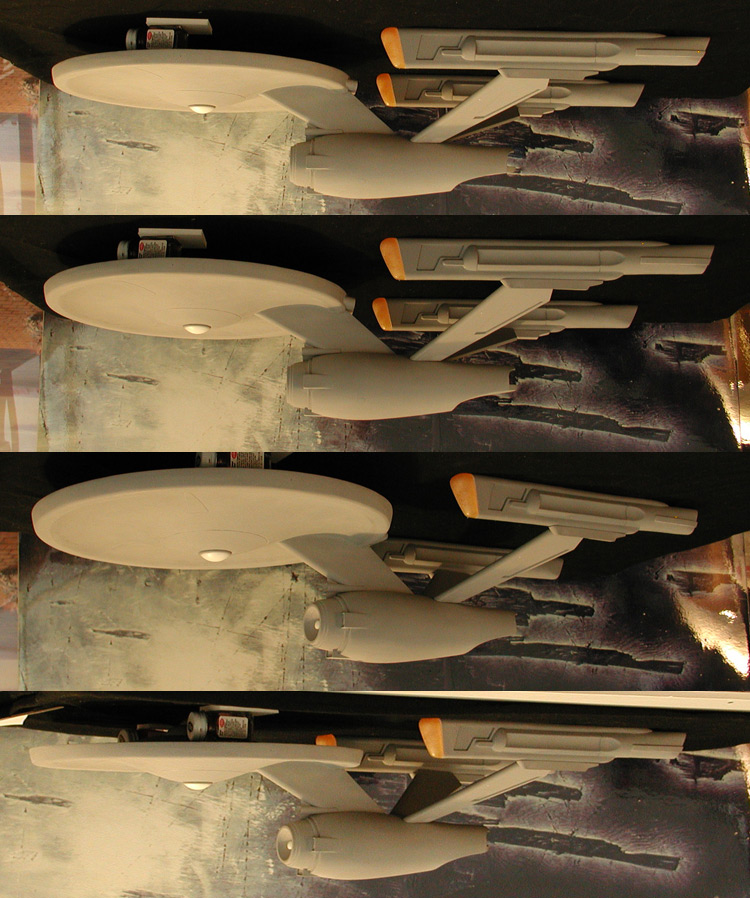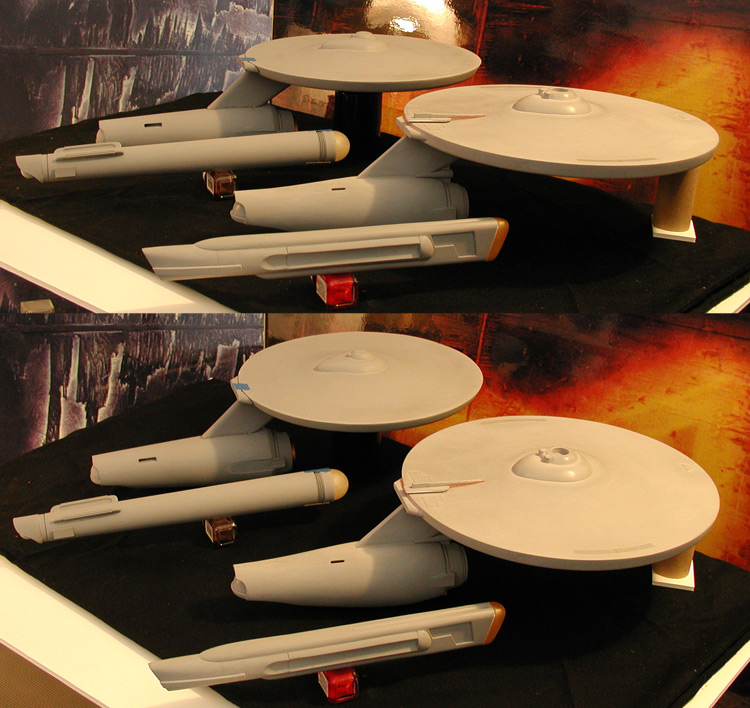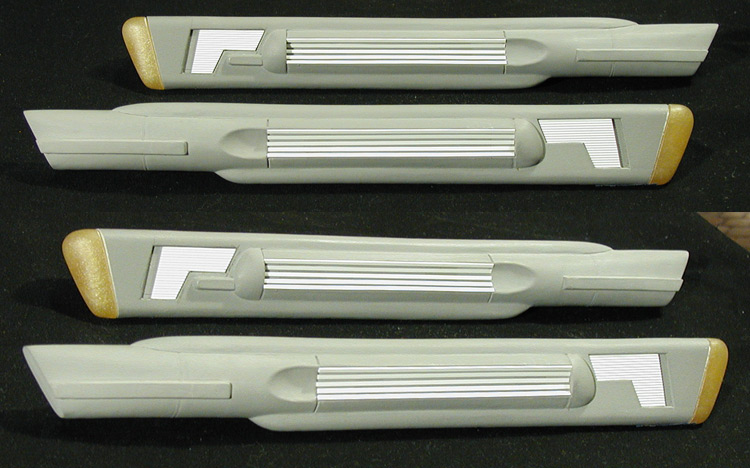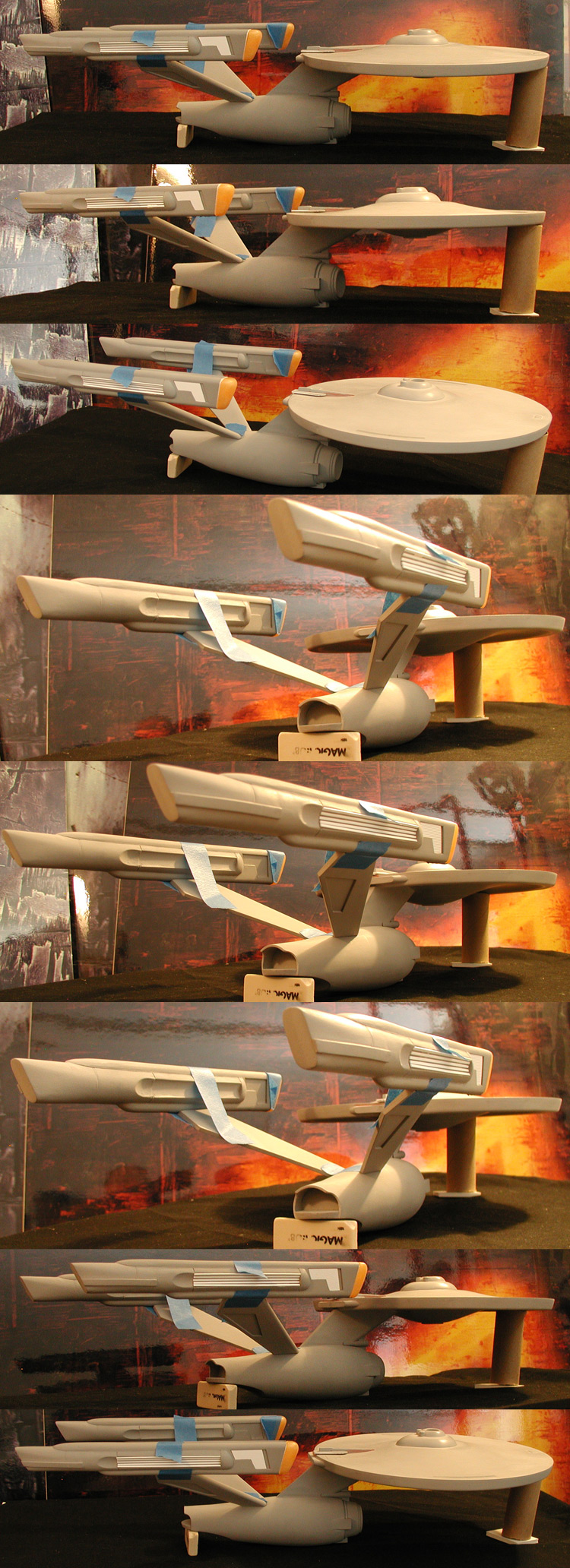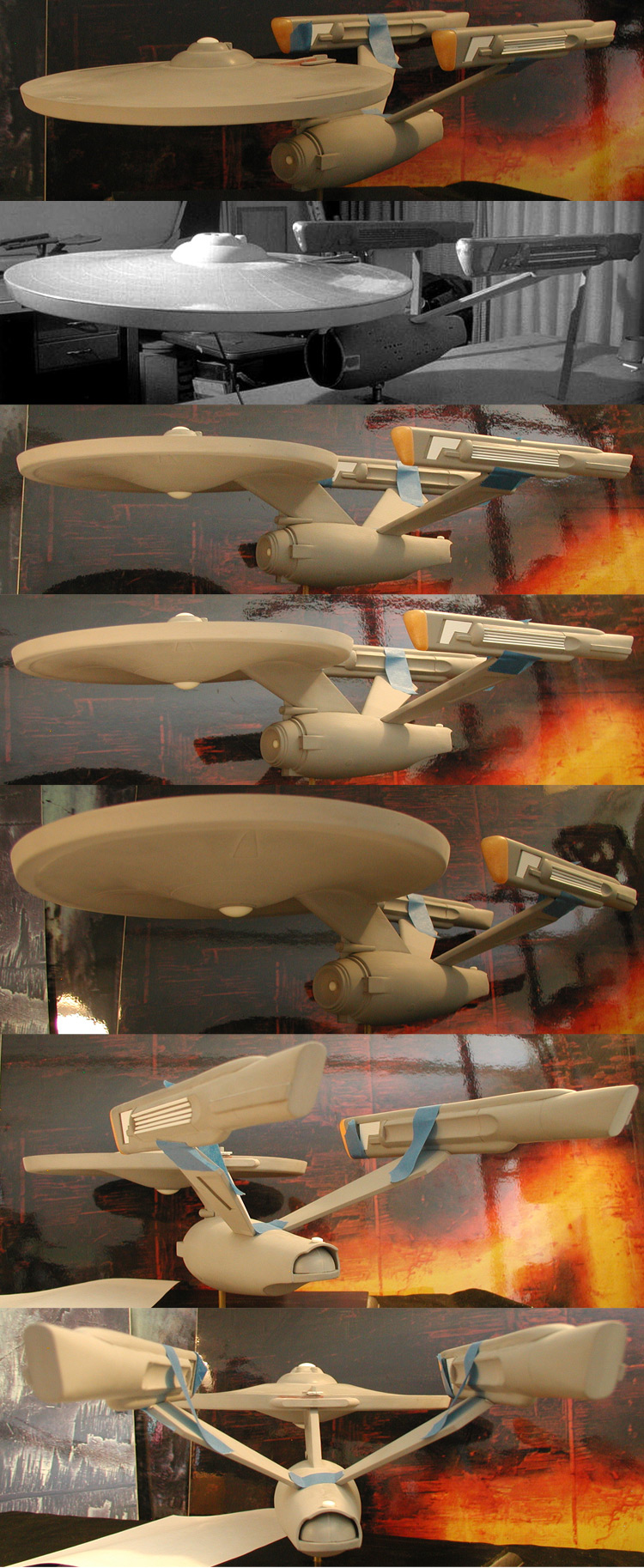I've been debating some of the aspects of the Price/Loos model and what I would personally do if I were to build a model from parts pulled from the original molds. While the original studio model was in an advance state when the plug was pulled on Phase II, it wasn't finished. There was a real possibility that Jefferies would have invested more time in the following months as production of
Little House on the Prairie finished and things that Price/Loos missed when looking at Jefferies' plans would have been corrected/modified.
And these were generally small things, which is why my study model and the incomplete studio model look very much alike. Price/Loos did a very good job of bringing Jefferies design into a physical form (under the pressure of a deadline).
I was able to string together some time over the last weeks and finally made the molds and cast the nacelle front caps.
After trimming down the nacelle fronts and cutting off the front of the nacelles, I did a test fitting...
I had made too much of the resin and poured the rest into the nacelle dome molds for my TOS Enterprise. Included in the image above is a dome that I polished and hit with a gloss coat, which show how the finish on the final parts should look like when I'm done.
I know that some people have made this model with blue front nacelle. The blue versions are based on Mike Minor's artwork, but Minor was actually out of the loop when it came to the later design of the Phase II Enterprise. All his work seemed to have been based on early Jefferies drawings or the modified AMT kit Price had done early on.
The thing is, with this design even the people who were in the loop were still out of the loop.
While Jefferies had taken great pains to include tons of details in his plans for Price/Loos to follow, the density of those details hid them during the model's construction. Heck, studying Jefferies drawings without the pressure of a looming deadline, I missed many of the same details as Price/Loos for years.
Price/Loos had very limited access to Jefferies (who was working on location on
Little House on the Prairie), and the rest of the people working on Phase II had almost none at all. Jefferies had drawn up the plans for the Enterprise in his hotel room in the evenings after working all day on
Little House on the Prairie.
But yeah, for Jefferies the visual language of TOS was to carry over to Phase II. The Enterprise was to be the same color (based on the color of the 33 inch studio model) and the warp engines were to light up similarly (including the blue glow behind the grills that they couldn't add during TOS). Even the deflector assembly, which returned to being a more integrated design like Jefferies originally had it in 1964, was still going to be copper with a silver emitter (Minor thought there was still going to be a dish because Price had included it on the modified AMT model, and Minor painted the retooled AMT dish in his paintings).
The other thing to keep in mind was that Minor was originally given the task of designing the Phase II Enterprise based on input from Jefferies. This is where the "Endeavor" class came from (first seen in the
Mandel/Drexler Enterprise Officers Manual). Eventually Jefferies decided to make the time in his schedule to redesign the Enterprise himself. Minor went from playing a big role to not having much access towards the end, and then played a much bigger role in TMP.
What is interesting is the role lighting played on the Enterprise. In TMP most of the warp lighting effects were eliminated and more fine details were added in, and the warp nacelle lighting was eliminated completely for both the Reliant and Excelsior models. Yet a couple years later the TNG Enterprise returned to nacelle lighting that echoed what was intended for Phase II. It seemed like lighting effects were considered an important part of bringing life to models on low resolution TV screens.
So I understand why people went with blue for the front of the nacelles, but it was never in the running as a possible color for the show. Red was, but that was because of the replacement domes on the 11 foot model in the Smithsonian at the time... which was also why the TNG Enterprise used red.
